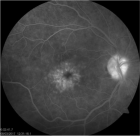Abstract
Review Article
The prognostic value of p53 and WT1 expression in cancer: new molecular insights and epigenetics explanations lead to a new medical hypothesis
Ahed J Alkhatib* and Ilham Ahed Alkhatib
Published: 01 June, 2023 | Volume 7 - Issue 1 | Pages: 003-009
This is a literature review study focusing on the expression of p53 and WT1. Both the p53 and WT1 proteins are tumor suppressors, which means that they play a role in preventing the progression into cancerous ones. If these proteins are altered or deleted, they lose the ability to carry out their role, which might result in the development of cancer. The primary objectives of this study were to review the literature regarding the expression of both p53 and WT1 and to investigate their prognostic significance; and to discuss our new hypothesis regarding the ratios of expression of WT1/p53, as well as our model regarding acute myeloid leukemia. In brief, the objectives were to make the focus in the suggested hypothesis as well as collecting the supportive literature. According to the findings of the current research, the level of expression of WT1 and p53 can indicate either a favorable or unfavorable prognosis for cancer patients. Further, we demonstrated that the expression, not just as a quality variable but also as a quantity variable, may have a more substantial explanation in the progression of tumors than we had previously thought. According to the theory that was derived from this research, if the expression of WT1/p53 (the expression is given as a ratio) is somewhere around 4, then p53 acts as though it were wild type and offers protection against tumors. In order to verify this idea, we need to do additional study.
Read Full Article HTML DOI: 10.29328/journal.acst.1001034 Cite this Article Read Full Article PDF
Keywords:
WT1; p52; Expression; Prognosis; Tumor
References
- Lane DP. Cancer. p53, guardian of the genome. Nature. 1992 Jul 2;358(6381):15-6. doi: 10.1038/358015a0. PMID: 1614522.
- Scharnhorst V, van der Eb AJ, Jochemsen AG. WT1 proteins: functions in growth and differentiation. Gene. 2001 Aug 8;273(2):141-61. doi: 10.1016/s0378-1119(01)00593-5. PMID: 11595161.
- Oosterhuis JW, Looijenga LH. Testicular germ-cell tumours in a broader perspective. Nat Rev Cancer. 2005 Mar;5(3):210-22. doi: 10.1038/nrc1568. PMID: 15738984.
- Gao J, Zhang X, Liu Y, Liu Y, Zheng L, Li Z. Prognostic value of co-expression of Wilms' tumor-1 and p53 proteins in nasopharyngeal carcinoma. J Cancer Res Ther. 14(2):361-365. doi: 10.4103/jcrt.JCRT_1048_16. PMID: 29578110.
- Deeg HJ, Lin A, Leisenring W. WT1 and p53 gene expression in de novo acute myeloid leukemia: associations with clinicopathologic and cytogenetic features, and outcome. Leukemia. 2003;17(5):976-83. doi: 10.1038/sj.leu.2402924. PMID: 12704416.
- Zhang H, Jin J, Chen H. WT1 gene methylation as a prognostic biomarker in acute myeloid leukemia. Leuk Res. 2015; 39(11):1247-54. doi: 10.1016/j.leukres.2015.08.015. PMID: 26365045.
- Guan X, Zhong Y, Liu Y. The prognostic and therapeutic implications of the methylation status of p53 and RASSF1A promoter in patients with breast cancers. Oncotarget. 2017; 7;8(6):10014-10026. doi: 10.18632/oncotarget.14446. PMID: 28060729.
- Nieto MA, Huang RY, Jackson RA, Thiery JP. EMT: 2016. Cell. 2016 Jun 30;166(1):21-45. doi: 10.1016/j.cell.2016.06.028. PMID: 27368099.
- Liu X, Jiang L, Wang A, Yu J, Shi F, Zhou X. MicroRNA-138 suppresses invasion and promotes apoptosis in head and neck squamous cell carcinoma cell lines. Cancer Lett. 2009 Dec 28;286(2):217-22. doi: 10.1016/j.canlet.2009.05.030. Epub 2009 Jun 21. PMID: 19540661; PMCID: PMC2783372.
- Wang Y, Shi J, Chai K, Ying X, Zhou BP. The Role of Snail in EMT and Tumorigenesis. Curr Cancer Drug Targets. 2013 Nov;13(9):963-972. doi: 10.2174/15680096113136660102. PMID: 24168186; PMCID: PMC4004763.
- Fan L, Li Y, Chen J, Wang X, Qu J, Jia X. Prognostic value of p53 expression in breast cancer: a retrospective study based on a tissue microarray. Cancer Cell Int. 2019; 19:262.
- Yang S, Yang C, Yu X, Geng Y, Li L. High p53 expression is associated with poor prognosis in ovarian cancer. Oncol Lett. 2019; 18:679–86.
- Yoshimura M, Sakurai T, Tsuchiya K, Ogata K, Takahashi M, Terada M. Prognostic impact of p53 expression on esophageal squamous cell carcinoma patients treated with neoadjuvant chemotherapy. Esophagus. 17: 52-60.
- Oji Y, Miyoshi S, Maeda H, Hayashi S, Tamaki H, Nakatsuka S, Yao M, Takahashi E, Nakano Y, Hirabayashi H, Shintani Y, Oka Y, Tsuboi A, Hosen N, Asada M, Fujioka T, Murakami M, Kanato K, Motomura M, Kim EH, Kawakami M, Ikegame K, Ogawa H, Aozasa K, Kawase I, Sugiyama H. Overexpression of the Wilms' tumor gene WT1 in de novo lung cancers. Int J Cancer. 2002 Jul 20;100(3):297-303. doi: 10.1002/ijc.10476. PMID: 12115544.
- Miyoshi Y, Ando A, Egawa C, Taguchi T, Tamaki Y, Tamaki H, Sugiyama H, Noguchi S. High expression of Wilms' tumor suppressor gene predicts poor prognosis in breast cancer patients. Clin Cancer Res. 2002 May;8(5):1167-71. PMID: 12006533.
- Stavnes HT, Nymoen DA, Langerød A. The prognostic value of HOX gene expression in ovarian cancer patients. Int J Cancer. 2013; 133(4): E395-E401. doi:10.1002/ijc.28111.
- Yoshikawa K. Combined use of subcellular localization of WT1 and p53 status enhances the prognostic stratification of breast carcinoma. Modern Pathology. 2010; 23(2): 178-189. doi: 10.1038/modpathol.2009.144.
- Zheng G. Co-expression of Wilms' tumor 1 and p53 predicts poor prognosis of ovarian cancer. Oncology Letters. 2017; 14(2): 249-254. doi: 10.3892/ol.2017.6153.
- Zhu Y. Prognostic significance of co-expression of Wilms' tumor 1 and p53 proteins in esophageal squamous cell carcinoma. Medical Oncology. 2012; 29(4): 2877-2883. doi: 10.1007/s12032-012-0282-6.
- Liu D, Wu K, Yang Y, Zhu D, Zhang C, Zhao S. Long noncoding RNA ADAMTS9-AS2 suppresses the progression of esophageal cancer by mediating CDH3 promoter methylation. Mol Carcinog. 2020 Jan;59(1):32-44. doi: 10.1002/mc.23126. Epub 2019 Oct 16. Erratum in: Mol Carcinog. 2022 Apr;61(4):435-436. Erratum in: JPEN J Parenter Enteral Nutr. 2022 Mar;46(3):737. PMID: 31621118.
- Zhang C, Shao S, Zhang Y, Wang L, Liu J, Fang F, Li P, Wang B. LncRNA PCAT1 promotes metastasis of endometrial carcinoma through epigenetical downregulation of E-cadherin associated with methyltransferase EZH2. Life Sci. 2020 Feb 15;243:117295. doi: 10.1016/j.lfs.2020.117295. Epub 2020 Jan 9. PMID: 31927050.
- Kouzarides T. Chromatin modifications and their function. Cell. 2007 Feb 23;128(4):693-705. doi: 10.1016/j.cell.2007.02.005. PMID: 17320507.
- Jones PA. Functions of DNA methylation: islands, start sites, gene bodies and beyond. Nat Rev Genet. 2012 May 29;13(7):484-92. doi: 10.1038/nrg3230. PMID: 22641018.
- Hsu NC, Huang YF, Yokoyama KK, Chu PY, Chen FM. Correlation between promoter hypermethylation of the WT1 gene and pathologic features in breast cancer patients. Oncol. Rep. 2007; 17:1277–1282. doi: 10.3892/or.17.6.1277.
- Choi JH, Oh YL, Kim JH. Prognostic implications of promoter CpG island hypermethylation and repetitive DNA hypomethylation in invasive breast cancer. Oncol Rep. 2010; 23(3):869-875. doi:10.3892/or_00000735.
- Rathi A, Virmani AK, Schorge JO, Elias KJ, Maruyama R, Minna JD, Mok SC, Girard L, Fishman DA, Gazdar AF. Methylation profiles of sporadic ovarian tumors and nonmalignant ovaries from high-risk women. Clin Cancer Res. 2002 Nov;8(11):3324-31. PMID: 12429618.
- Bao X, Ren T, Huang Y, Sun K, Wang S, Liu K, Zheng R. WT1 gene methylation as a prognostic marker in acute myeloid leukemia. Leukemia research. 2014; 38(2):218-223. doi: 10.1016/j.leukres.2013.11.008.
- Li X, Zhang Y, Zhang H, Liu X, Gong T, Li M. Epigenetic silencing of MicroRNA-375 induced by histone modifications promotes cell invasion in breast cancer. Oncology Reports. 2007; 18(5):1225-1231.
- Yu D, Liu X, Han G. Loss of WT1 expression and its prognostic significance in adult de novo acute myeloid leukemia. Leuk Lymphoma. 2015; 56(6):1747-1755. doi:10.3109/10428194.2014.964711.
- Sato N, Fukushima N, Chang R, Matsubayashi H, Goggins M. Differential and epigenetic gene expression profiling identifies frequent disruption of the RELN pathway in pancreatic cancers. Gastroenterology. 2006 Feb;130(2):548-65. doi: 10.1053/j.gastro.2005.11.008. PMID: 16472607.
- Choi IS, Estecio MR, Nagano Y, Kim DH, White JA, Yao JC, Issa JP, Rashid A. Hypomethylation of LINE-1 and Alu in well-differentiated neuroendocrine tumors (pancreatic endocrine tumors and carcinoid tumors). Mod Pathol. 2007 Jul;20(7):802-10. doi: 10.1038/modpathol.3800825. Epub 2007 May 4. PMID: 17483816.
- Kirschner KM, Baltin J, von Figura G. The Wilms' tumor suppressor Wt1 activates transcription of the p53-family member p73 in vitro. Oncogene. 1999; 18(22):3963-3971. doi:10.1038/sj.onc.1202814
- Fidlerova J, Mysliwietz J, Alkhamis O. Overexpression of Wilms' tumor 1 gene in p53-null myeloid precursor cells enhances their proliferation, survival and sensitivity to chemotherapeutic agents. Oncogene. 2010; 29(15):2213-2226. doi:10.1038/onc.2009.507.
- Schumacher B, Han S, Zhang Z. Dual regulation of BRCA1 by p21-dependent Inhibition of Breast Cancer Cell Proliferation. Cancer Res. 2013; 73(14):4624-4634. doi:10.1158/0008-5472.CAN-12-4356.
- Oji Y, Tatsumi N, Fukuda M. The Wilms' tumor gene WT1-OCT4 axis regulates glioblastoma proliferation. Oncotarget. 2017; 8(28):45483-45494. doi: 10.18632/oncotarget.17439.
- Zhang X, Liu S, Hu T. Wilms' tumor 1 protein represses the expression of the tumor suppressor interferon regulatory factor 8 in human breast cancer cells. Oncol Lett. 2018; 15(6):10091-10098. doi: 10.3892/ol.2018.8492.
- Bani-Ahmad MA, Al-Sweedan SA, Al-Asseiri MA, Alkhatib AJ. A Proposed Kinetic Model for the Diagnostic and Prognostic Value of WT1 and p53 in Acute Myeloid Leukemia. Clin Lab. 2018 Mar 1;64(3):357-363. doi: 10.7754/Clin.Lab.2017.170915. PMID: 29739109.
- Alkhatib AJ. Constructing Kinetic Mathematical Models to Predict Cancer Behavior: A New Mirror Image as a New Medical Hypothesis. Journal of Oncology Translational Research. 2020; 6(1). https://doi.org/10.25215/0601.001.
Figures:
Similar Articles
-
Risk factors of survival in breast cancerAkram Yazdani*. Risk factors of survival in breast cancer. . 2019 doi: 10.29328/journal.acst.1001007; 3: 042-044
-
Results of chemotherapy in the treatment of chronic lymphoid leukemia in Black Africa: Experience of Côte d’IvoirePacko Dieu-le-veut Saint-Cyr Sylvestre*,N’dhatz Comoe Emeraude,Kamara Ismael,Boidy Kouakou,Koffi Kouassi Gustave,Nanho Danho Clotaire,Koffi Kouassi Gustave. Results of chemotherapy in the treatment of chronic lymphoid leukemia in Black Africa: Experience of Côte d’Ivoire. . 2019 doi: 10.29328/journal.acst.1001008; 3: 045-048
-
Different optimization strategies for the optimal control of tumor growthAbd El Moniem NK*,Sweilam NH,Tharwat AA. Different optimization strategies for the optimal control of tumor growth. . 2019 doi: 10.29328/journal.acst.1001010; 3: 052-062
-
Risk factor of liver metastases in breast cancerAkram Yazdani*. Risk factor of liver metastases in breast cancer. . 2019 doi: 10.29328/journal.acst.1001011; 3: 063-065
-
Chlorhexidine and oral cancer: A short reviewShrivardhan R Kalghatgi*,Mahesh R Khairnar,Tanushri Dalvi. Chlorhexidine and oral cancer: A short review. . 2020 doi: 10.29328/journal.acst.1001012; 4: 001-002
-
3D software reconstruction for planning robotic assisted radical nephrectomy with level III caval thrombusMarcos Tobias-Machado*,Ricardo JF de Bragança,Rafael Tourinho-Barbosa,Hamilton C Zampolli,Aurus M Dourado. 3D software reconstruction for planning robotic assisted radical nephrectomy with level III caval thrombus. . 2020 doi: 10.29328/journal.acst.1001019; 4: 029-033
-
Vaginal embryonal rhabdomyosarcoma in young woman: A case report and literature reviewIssam Lalya*,Sana Laatitioui,Abdelhamid E,Omrani,Mouna Khouchani,Ismail Essadi. Vaginal embryonal rhabdomyosarcoma in young woman: A case report and literature review. . 2020 doi: 10.29328/journal.acst.1001020; 4: 034-037
-
Prognostic significance of the Central Tumor Size (CTS) in Cervical Cancer (CC) stages IIb and IIIb: What should we do with the FIGO staging system and therapeutic strategies?Alejandro Soderini*,Alejandro Aragona,Agustin Quintaie,Horacio Moschen,Martín Mendez. Prognostic significance of the Central Tumor Size (CTS) in Cervical Cancer (CC) stages IIb and IIIb: What should we do with the FIGO staging system and therapeutic strategies?. . 2021 doi: 10.29328/journal.acst.1001023; 5: 002-005
-
Pituitary gland metastasis from breast cancer: case reportMohamed Almadhoni,Mohamed Ali Baggas*. Pituitary gland metastasis from breast cancer: case report. . -0001 doi: 10.29328/journal.acst.1001025; 6: 001-003
-
Pituitary gland metastasis from breast cancer: case reportMohamed Almadhoni,Mohamed Ali Baggas*. Pituitary gland metastasis from breast cancer: case report. . 2022 doi: 10.29328/journal.acst.1001025; 6: 001-003
Recently Viewed
-
Types and Outcomes of Diagnostic Measures provided for women Presented with Postmenopausal BleedingMalaz Elsammani,Sahar Elhawari,Gawahir Murad,Khairi Nasr,Alla Abdelgader,Hajar Suliman,Baharelden Abuobida,Bashir Abdeen,Awadalla Abdelwahid*. Types and Outcomes of Diagnostic Measures provided for women Presented with Postmenopausal Bleeding. Clin J Obstet Gynecol. 2025: doi: 10.29328/journal.cjog.1001186; 8: 030-036
-
Mass Serological Screening in the Armed Forces Using the Serum-Pooling Method. Analytical Evaluation of the Chemiluminescence MethodAbi R*,Ameur O,Hassine S,Chanhih N,Ouannass S,Goura H,Eddaif KH,Elkochri S,Aadi Y,Elbenaissi Y,Tagajdid MR,Elannaz H,Laraqui A,Elmchichi B,Touil N,Kasouati J,Elouennass M,Ennibi K,Lahlou IA. Mass Serological Screening in the Armed Forces Using the Serum-Pooling Method. Analytical Evaluation of the Chemiluminescence Method. Int J Clin Virol. 2025: doi: 10.29328/journal.ijcv.1001062; 9: 001-004
-
The Dynamics of Eating Behavior Disorders and the Level of General Psychological Adaptation in Bodybuilding and Fitness AthletesElena Mihaita*, Georgeta Mitrache, Marius Stoica, Rocsana Manea Bucea Tonis. The Dynamics of Eating Behavior Disorders and the Level of General Psychological Adaptation in Bodybuilding and Fitness Athletes. J Neurosci Neurol Disord. 2023: doi: 10.29328/journal.jnnd.1001081; 7: 065-089
-
Dry eye syndrome: Therapeutic challenges and future trendsIrami Araújo-Neto,Amália Cinhtia Meneses Rêgo, Irami Araújo-Filho*. Dry eye syndrome: Therapeutic challenges and future trends. Int J Clin Exp Ophthalmol. 2019: doi: 10.29328/journal.ijceo.1001023; 3: 030-034
-
Correlation between the presence of maternal gestational or pre-gestational pathologies and hearing impairment in the puerperal periodRaphaella Costa Moreira Simen*,Alan Araújo Vieira,Maria Elisa Vieira da Cunha Ramos Miterhof,Armanda de Oliveira Pache de Faria. Correlation between the presence of maternal gestational or pre-gestational pathologies and hearing impairment in the puerperal period. Clin J Obstet Gynecol. 2019: doi: 10.29328/journal.cjog.1001033; 2: 122-126
Most Viewed
-
Evaluation of Biostimulants Based on Recovered Protein Hydrolysates from Animal By-products as Plant Growth EnhancersH Pérez-Aguilar*, M Lacruz-Asaro, F Arán-Ais. Evaluation of Biostimulants Based on Recovered Protein Hydrolysates from Animal By-products as Plant Growth Enhancers. J Plant Sci Phytopathol. 2023 doi: 10.29328/journal.jpsp.1001104; 7: 042-047
-
Sinonasal Myxoma Extending into the Orbit in a 4-Year Old: A Case PresentationJulian A Purrinos*, Ramzi Younis. Sinonasal Myxoma Extending into the Orbit in a 4-Year Old: A Case Presentation. Arch Case Rep. 2024 doi: 10.29328/journal.acr.1001099; 8: 075-077
-
Feasibility study of magnetic sensing for detecting single-neuron action potentialsDenis Tonini,Kai Wu,Renata Saha,Jian-Ping Wang*. Feasibility study of magnetic sensing for detecting single-neuron action potentials. Ann Biomed Sci Eng. 2022 doi: 10.29328/journal.abse.1001018; 6: 019-029
-
Pediatric Dysgerminoma: Unveiling a Rare Ovarian TumorFaten Limaiem*, Khalil Saffar, Ahmed Halouani. Pediatric Dysgerminoma: Unveiling a Rare Ovarian Tumor. Arch Case Rep. 2024 doi: 10.29328/journal.acr.1001087; 8: 010-013
-
Physical activity can change the physiological and psychological circumstances during COVID-19 pandemic: A narrative reviewKhashayar Maroufi*. Physical activity can change the physiological and psychological circumstances during COVID-19 pandemic: A narrative review. J Sports Med Ther. 2021 doi: 10.29328/journal.jsmt.1001051; 6: 001-007

HSPI: We're glad you're here. Please click "create a new Query" if you are a new visitor to our website and need further information from us.
If you are already a member of our network and need to keep track of any developments regarding a question you have already submitted, click "take me to my Query."

















































































































































